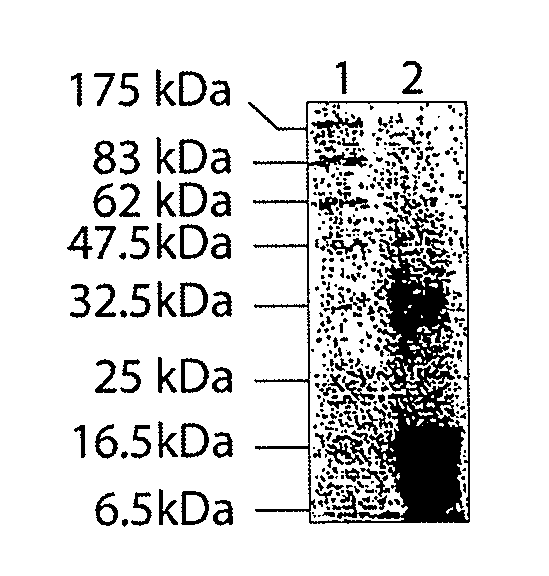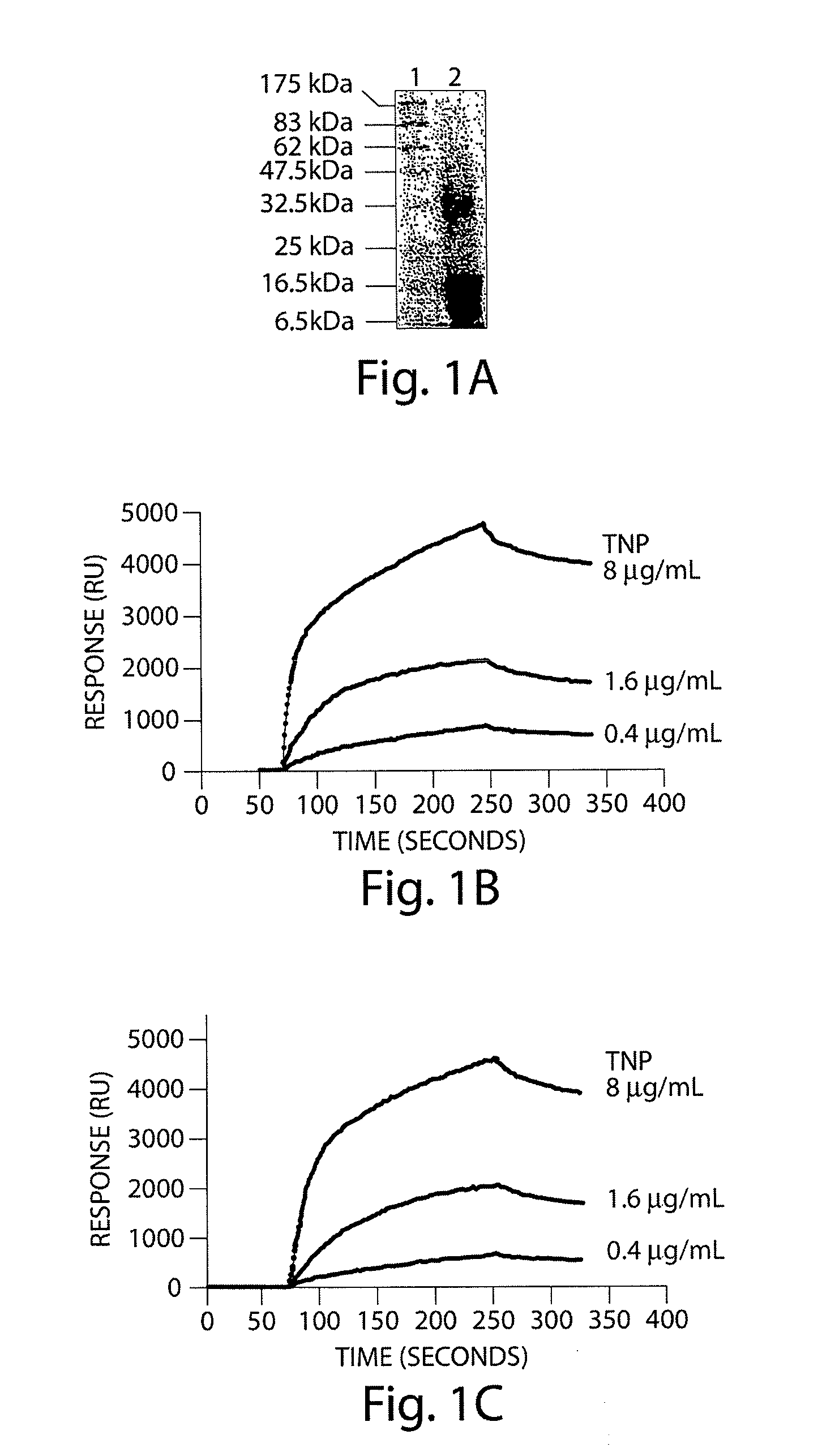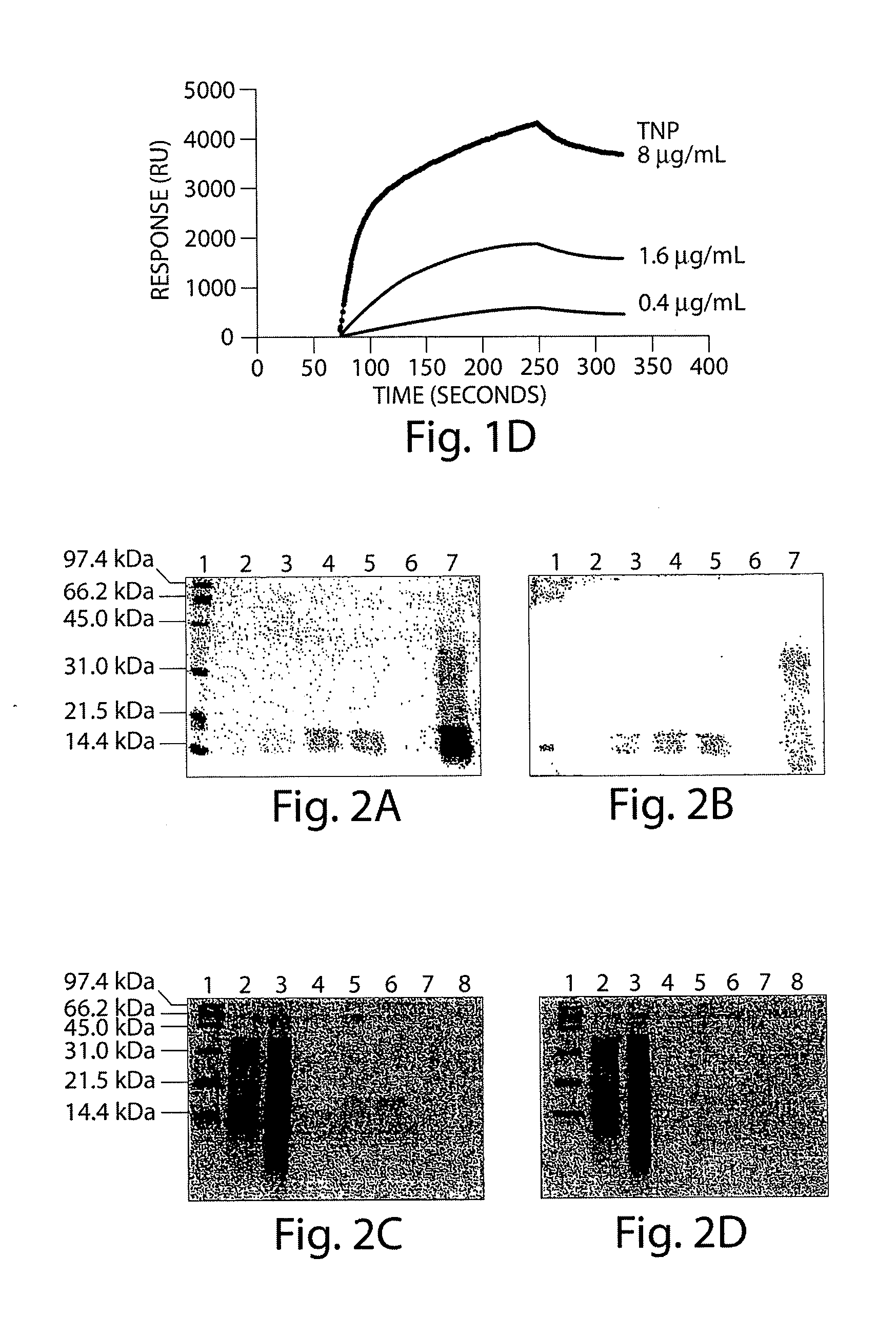Proteins for use in diagnosing and treating infection and disease
a technology of infection and disease, applied in the field of thymus derived peptides, can solve the problems of limited therapeutic treatment options, impaired immune system of patients, and host sensitivity to opportunistic behavior
- Summary
- Abstract
- Description
- Claims
- Application Information
AI Technical Summary
Benefits of technology
Problems solved by technology
Method used
Image
Examples
example 1
[0290]Thymus proteins were isolated from freshly sacrificed calf thymus according to US 20040018639. Briefly, the thymus proteins were extracted, purified and characterized from calf thymus 4 hours after sacrifice as described below.
[0291]Extraction(s) of Lysine-rich Histone Fraction from Thymus Cells with Enzyme Degradation by Pepsin: The thymus tissue and its associated connective tissues were separated from a calf within 4 hours of its sacrifice. The tissues were washed with a solution containing 0.14 M NaCl, and 0.005 M EDTA-Na3 at 4° C. for 5 minutes. The wash solution was decanted and the tissues were washed a second time under the same conditions. After decantation of the wash solution, the tissues were weighed. The tissues were homogenized in 0.14 M NaCl, 0.005 M KCl, 0.005 M MgCl2, 0.003 M CaCl2, 0.15 M TRIS-HCl, pH 7.6, 0.25 M sucrose in a tissue homogenizes (Brinkman Polytron Homogenizes, Brinkman Instruments, Inc., Westbury, N.Y.), at 4° C. and at an rpm and for the dura...
example 2
[0301]Sequence analysis of the three bands with approximate molecular weights of 16,000; 15,000 and 12,000 Daltons was performed at the Molecular Structure Facility at the University of California, Davis by de novo sequencing using tandem mass spectrometry. Protein analysis was performed using a Finnigan LCQ Deca XP Plus (San Jose, Calif.) coupled directly to an LC column. The Sequest analysis software (Bioworks v. 3.1) was used to identify the peptide sequences in a human or bovine protein database that best match the observed MS / MS spectra.
[0302]The results from the bovine database identified the 16 kDa protein as histone H 1.1 or H2B. Analysis also indicates that the 15 kDa and 12 kDA proteins likely represent bovine H1.1 sequence (50.5% and 48.6% sequence coverage, respectively). In addition to these analyses the sequences were also compared to the human database. Again, the 16 kDa protein likely represents human histone H2.B (42.1% coverage), although the sequence of this prote...
example 3
[0303]The identity of histones and cystatin A was confirmed by directly demonstrating to binding of these proteins to HIV1 gp120 and human CD4 molecules. Binding studies were performed on the BIAcore 2000 (Biacore, Sweden). Recombinant human CD4 (Progenies, Cat. # PRO 1008-1), recombinant HIV-1 gp120 (NIH AIDS Research & Reference Reagent Program, #4961) and gp41 (546-682 aa) were immobilized to the surface of biosensor chip (CM5) via an amine coupling of the appropriate protein to carboxyl groups in the dextran matrix of the chip. Serial dilutions of the crude sample in the running buffer containing 10 mM HEPES, 150 mM NaCl, 0.05% surfactant P20, pH 7.4 were injected at 5 μl / min over each immobilized target and the kinetics of binding / dissociation was measured as change of the SPR signal (in resonance units RU). Each injection was followed by a regeneration step of 30-sec pulse of 1M NaCl, 50 mM NaOH. Fitting of experimental data was done with BIAevaluation 3.0 software.
[0304]Four ...
PUM
| Property | Measurement | Unit |
|---|---|---|
| weight gain | aaaaa | aaaaa |
| weight gain | aaaaa | aaaaa |
| weight gain | aaaaa | aaaaa |
Abstract
Description
Claims
Application Information
 Login to View More
Login to View More - R&D
- Intellectual Property
- Life Sciences
- Materials
- Tech Scout
- Unparalleled Data Quality
- Higher Quality Content
- 60% Fewer Hallucinations
Browse by: Latest US Patents, China's latest patents, Technical Efficacy Thesaurus, Application Domain, Technology Topic, Popular Technical Reports.
© 2025 PatSnap. All rights reserved.Legal|Privacy policy|Modern Slavery Act Transparency Statement|Sitemap|About US| Contact US: help@patsnap.com



